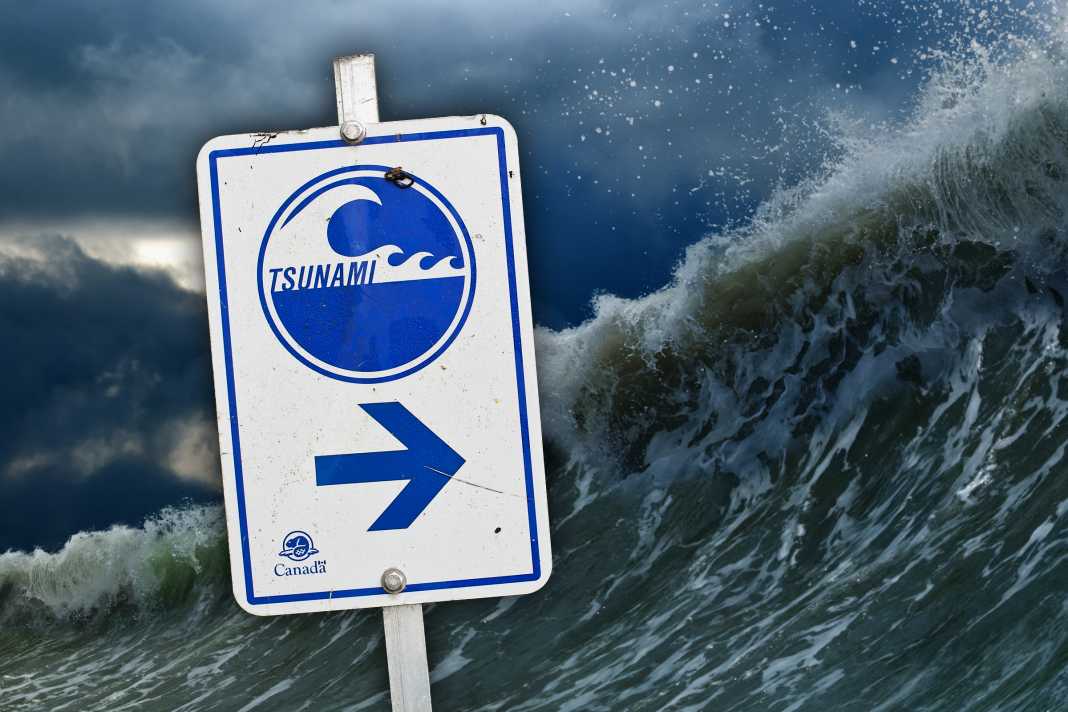




A severe earthquake in the North Pacific has triggered tsunami waves on the coasts of several countries. The centre of the quake was in the open sea, around 130 kilometres off the Russian peninsula of Kamchatka. With a measured magnitude of 8.8, the quake was the strongest in the world since the Fukushima disaster in March 2011, according to the US Earthquake Observatory, while the German Research Centre for Geosciences in Potsdam gave the magnitude as 7.8. The resulting tidal waves not only caused flooding in Russia - Japan, Hawaii and the US west coast were also affected. Even in distant Latin America, several countries issued tsunami warnings.
Russia's Pacific coast hardest hit
Tsunami waves more than three metres high reached Russia's Pacific coast off Kamchatka. The strongest wave was even five metres high, reported the Russian state news agency Ria Novosti.
The initial warnings for the US West Coast, Hawaii and Japan have now been downgraded slightly.
Formation and propagation of tsunamis
The Pacific and North American continental plates meet on the Kamchatka Peninsula, making the region one of the world's most earthquake-prone zones. These tectonic plates can become entangled with each other and build up tension, which can suddenly discharge and trigger earthquakes. This causes the plates to shift horizontally and vertically, which also causes the overlying water masses to move.
Tsunamis are fundamentally different from normal ocean waves. While wind waves only move the layers of water near the surface, tsunamis cover the entire water column from the seabed to the surface. In the open sea, they are barely perceptible and propagate at speeds of up to 800 kilometres per hour. Only near the coast, where the water becomes shallower, do the waves pile up and develop their destructive power. A tsunami usually consists of several wave crests that follow one another at intervals of a few minutes to over an hour.
Correct behaviour on the water
Sailing yachts on the open sea are normally only slightly affected by tsunamis, while the main danger is in the immediate vicinity of the coast. A tsunami is usually barely noticeable on the high seas, as the wave moves as a very wide, flat wave at high speed, raising and lowering the boats slightly at most. This is also how in this report from the 2004 tsunami in Thailand on Bobby Schenk's homepage. Sailors who are in deep water at the time of a tsunami (i.e. at a sufficient distance from the coast, usually from a depth of around 100 metres) generally only report unusual currents and low swell - damage is rare here.
Only when it reaches shallow coastal regions does the wave pile up, lose speed and unleash its destructive power. Smaller boats near the harbour, especially those moored on shallow beaches or anchored close to the shore, are often destroyed or thrown ashore.
This is what happened to the yacht "Freydis II" of the circumnavigating couple Heide and Erich Wilts during the 2011 tsunami on the coast of Japan, which also destroyed the Fukushima nuclear power plant. The 15-metre-long steel yacht "Freydis II" was moored in the marina when the tsunami passed over it. The ship seemed lost for three days until friends of the Wilts discovered the red Reinke Hydra on a rock. Only 30 kilometres away from the badly damaged nuclear reactor. However, it was not possible to salvage the ship; only a few items of equipment could be secured.
In the event of a tsunami warning, sailors should therefore seek the open sea, as deep as possible, rather than the supposedly protective coast.
